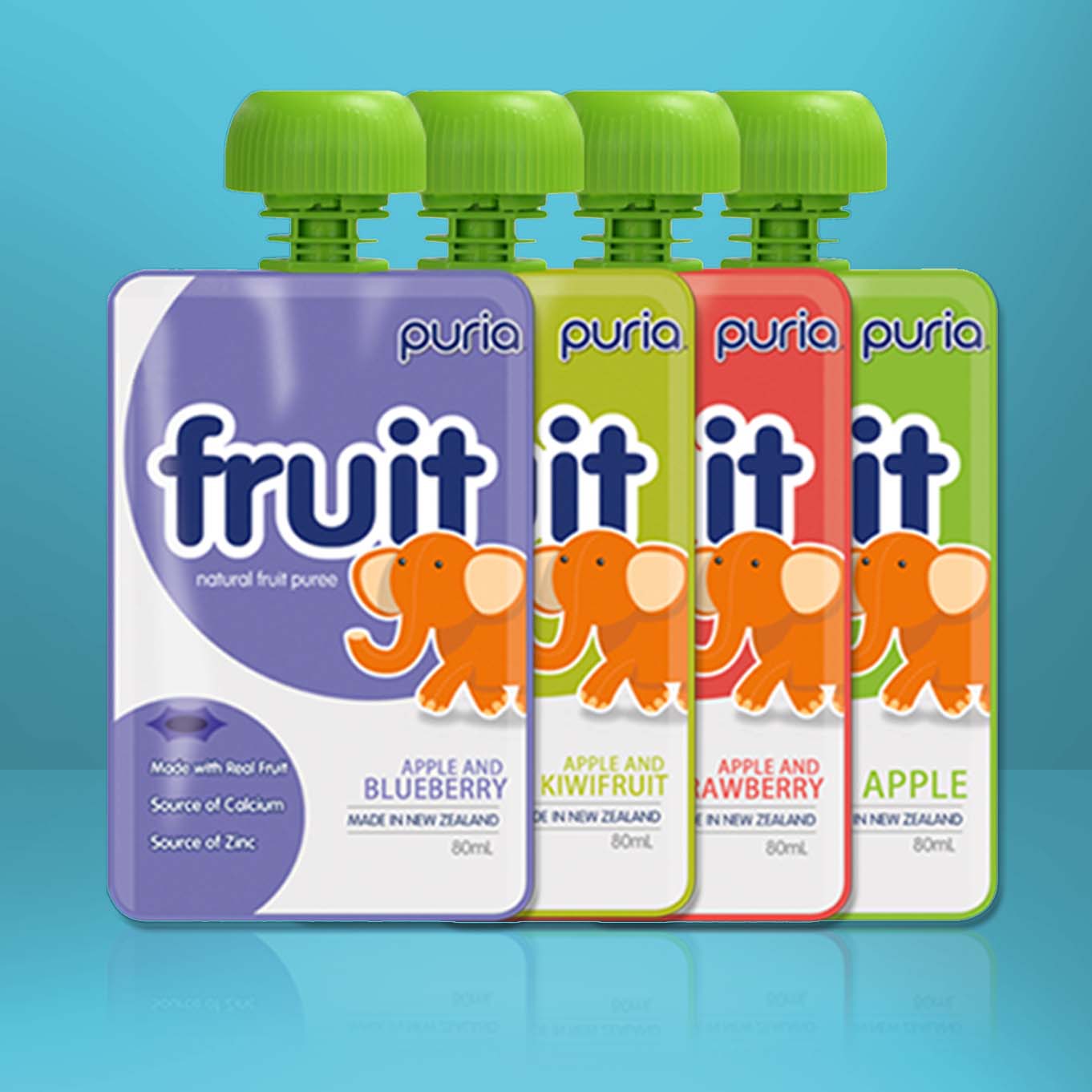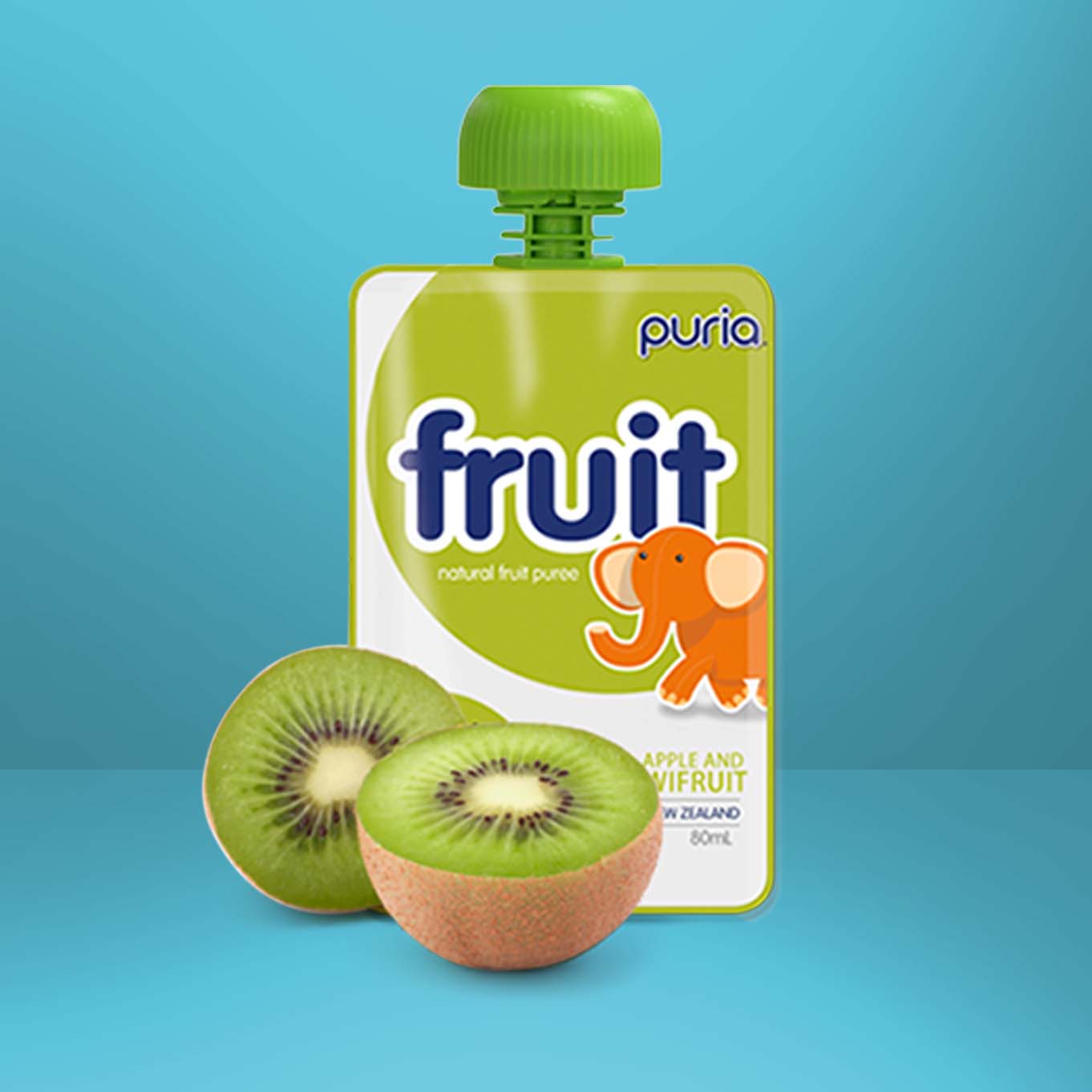Puria® Brain and Vision Support Capsules are specifically designed for women who are planning to become pregnant…
Exclusively breastfed babies and young children in New Zealand should be on a Vitamin D supplement, say health experts.
Vitamin D deficiency is a growing threat in New Zealand with one in five babies at risk of rickets, a serious bone disorder, due to low Vitamin D levels.¹ Vitamin D deficiency can also lead to respiratory infections.
New Zealand company Douglas Nutrition, with the aid of funding from Callaghan Innovation, has developed and launched Puria® Vitamin D Drops, to meet the demand from doctors and dietitians for an easy-to-administer and safer solution to Vitamin D deficiency in children.
Puria® Vitamin D Drops is a unique one drop (400IU) a day supplement for babies and children. The supplement has no colouring, flavouring, sweetener or preservatives, no added gluten, dairy or yeast. Each bottle of Puria® Vitamin D Drops contains 90 doses, and the product does not need refrigeration after opening.
New Zealand has a higher rate of Vitamin D deficiency than other countries because food is not fortified with the vitamin, and supplements are not routinely recommended by health professionals.
A leading researcher, Dr Ben Wheeler of Otago University, says he strongly supports that any infant who is exclusively breastfed, or not receiving 1000mls of formula a day, and has one or more known risk factors should be on a Vitamin D supplement while breastfeeding and in early childhood.
Dr Wheeler says the risk factors include being under three, having darker skin pigment, being exclusively breastfed (particularly during winter or spring) and living south of Auckland. If mothers in NZ don’t get enough Vitamin D then their breast milk will also be deficient, putting exclusively breastfed babies at risk.
Douglas Nutrition chief executive Dr Andrew McLeod says his company shared the concern of neonatal and paediatric dieticians that New Zealand parents needed an appropriate Vitamin D nutritional supplement.
“The Ministry of Health recommends Vitamin D supplementation in babies who are at high risk of deficiency. However, the currently funded supplement also contains Vitamin A which the child may not need and which may also be harmful in high doses.
“Puria® Vitamin D Drops are easier to take in the right amount and are, therefore, safer. The supplement helps support the absorption of calcium for strong bones and teeth. It may also assist in maintaining a healthy immune system.”
In a study co-authored by Dr Ben Wheeler and published in June 2015, researchers from Otago University’s NZPSU identified 58 cases of rickets among New Zealand children, a surprisingly high number for a disease many associate with the 19th century.²
Most people get Vitamin D from food or from exposure to sunlight. However, concerns about too much Ultra-Violet light in sunlight in NZ which can cause skin cancer and melanoma, have led to parents sensibly protecting their children from too much sun. The Otago researchers suggested supplementation may be the best way to resolve this dilemma.
Meanwhile, Massey University nutrition researchers, Dr Pamela von Hurst and Dr Cathryn Conlon report that Vitamin D deficiency is a potential issue for NZ infants who are exclusively breastfed, have darker skin or are kept out of the sun.
“Mothers need high levels of Vitamin D to pass it on to their babies. Mothers who have very dark skin, especially, take much longer in the sun to make Vitamin D. So supplementation is important particularly for some migrant groups in NZ,” comments Dr von Hurst.
“A single nutrient Vitamin D supplement is the preferred method as you have to be conservative in administering the mixed nutrient supplement to avoid giving too high a dose of Vitamin A,” explains Dr Conlon.
Dr Conlon says that a Massey University study among a small group of 14 moderate to late pre-term babies after discharge from hospital, who had been breastfed and had no Vitamin D supplementation, had very low levels of Vitamin D.³
“In a larger study among 1330 pre-schoolers throughout NZ in winter we found that 50 percent were below recommended levels of Vitamin D. Interestingly, there were no geographical differences,” says Dr von Hurst.4
¹Vitamin D During Pregnancy and Infancy and Infant Serum 25-Hydroxyvitamin D Concentration; Cameron C. Grant, Alistair W. Stewart, Robert Scragg, Tania Milne, Judy Rowden, Alec Ekeroma, Clare Wall, Edwin A. Mitchell, sue Crengle, Adrian Trenholme, Julian Crane and Carlos A. Camargo Jr. Originally published online December 16, 2013; 2014;133;e143Pediatrics; doi:10.1542/peds.2013-2602
²Wheeler, B. J., Dickson, N. P., Houghton, L. A., Ward, L. M. and Taylor, B. J. (2015), Incidence and characteristics of vitamin D deficiency rickets in New Zealand children: A New Zealand Paediatric Surveillance Unit study. Australian and New Zealand Journal of Public Health, 39: 380–383. doi: 10.1111/1753-6405.12390
³Conlon C.A, Cormack B.E, Moor C.F, Emmett B.K, von Hurst P.R, Mugridge O.A, Bloomfield F. Iron and Vitamin D deficiency in preterm babies – a potential programming link to cardiovascular disease in later life. The Power of Programming International Conference on Developmental Origins of Adiposity and Long-Term Health March 13-15th Munich
4CT Cairncross, W Stonehouse, CA Conlon, B McDonald, CC Grant, D Eyles, LA Houghton, J Coad, CA Camargo Jr., PR von Hurst. Factors affecting winter vitamin D status in New Zealand pre-school children. Proceedings of the 18th Vitamin D Workshop, Delft, The Netherlands, April 2015. Page 65
-
Natural Fruit Puree
$13.00 inc GST



